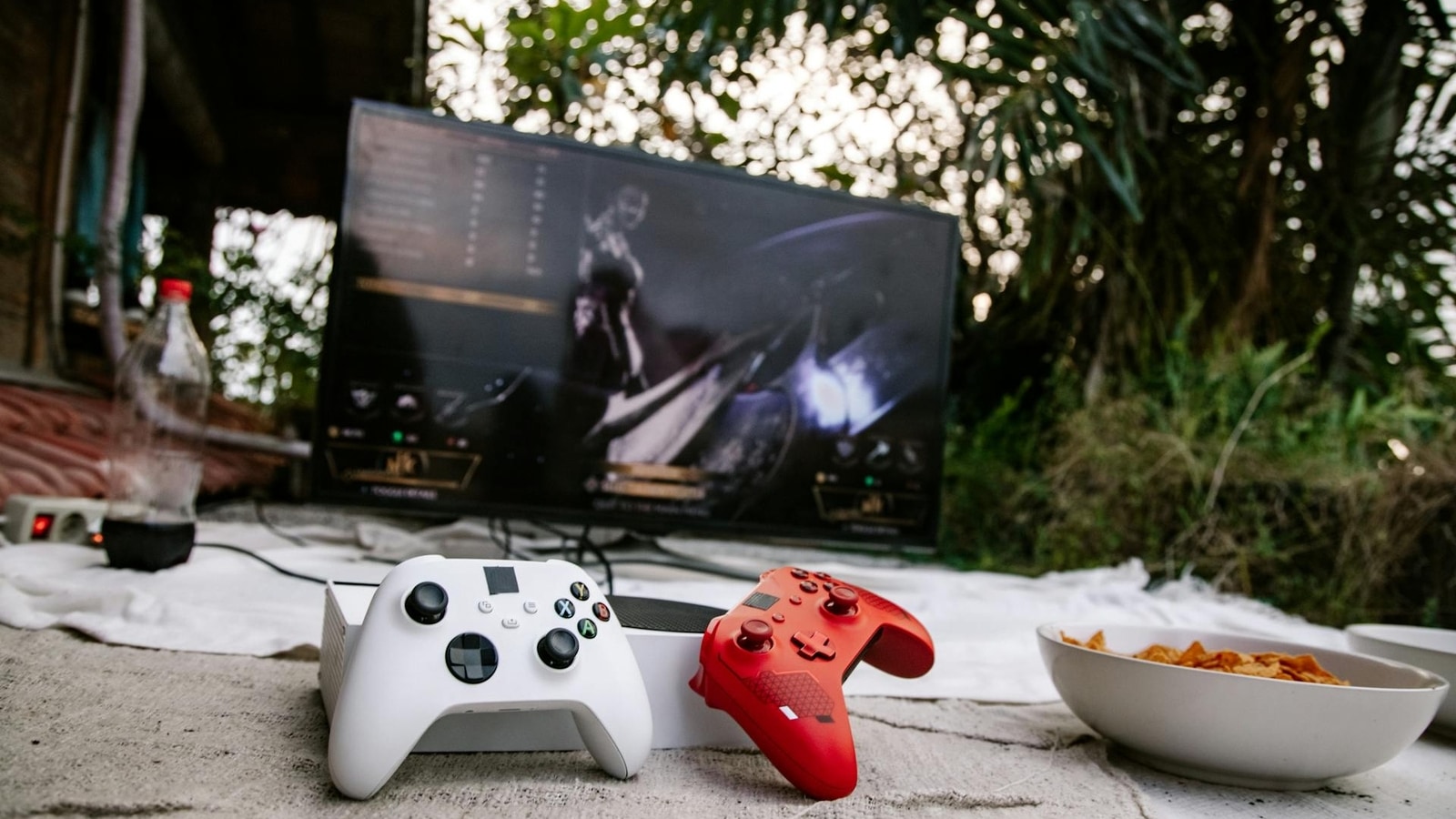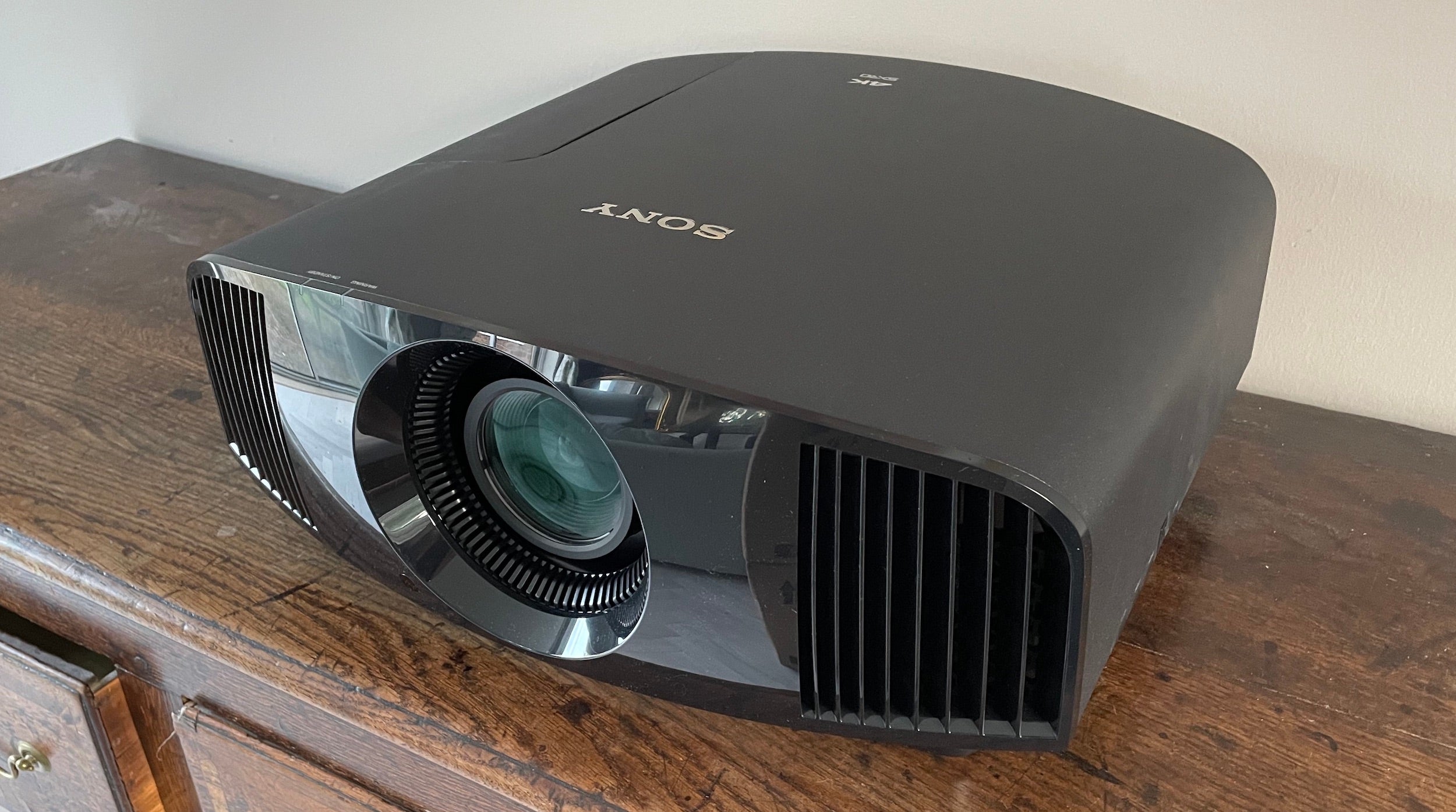Verdict
Despite using a traditional lamp over the lasers found higher up in Sony’s projector range, the VW290ES has the light control and processing power required to deliver the most convincing high dynamic range pictures seen from such an affordable projector.
Pros
- Exceptionally effective HDR
- Excellent sharpness and detail
- Great value
Cons
- No 4K@120Hz/VRR gaming support
- Large footprint
- Not the brightest projector for its money
Introduction
Sony recently revealed that it’s going to introduce a new model, the XW5000ES, which will bring laser lighting to the entry-level end of its native 4K SXRD projector range for the first time.
However, far from making the brand’s current VW290ES lamp-based projector instantly out of date, Sony’s recent news has potentially made it more desirable. Why? Because it’s now widely available for just £3999 versus the £5499 it cost before. So are we looking at the home theatre world’s biggest bargain?
Availability
- UKRRP: £3999
- USARRP: $5400
- EuropeRRP: €3999
- AustraliaRRP: AU$8999
The VW290ES is now widely available for £3999 in the UK, and €3999 in Europe. That’s £1500 / €1500 less than it cost at launch. Cue distant “kerching” sounds and lots of home cinema fans with dangerously fast heartbeats.
Note that in the US the VW290ES is known as the VW325ES, and costs $5400.
Design
- Black and white options available
- Large footprint
- Impressively quite venting system
Despite its new, eye-catchingly affordable price, the Sony VW290ES is a serious bit of kit. So it’s no surprise to find it housed in an unusually large chassis by modern projector standards. You might just be able to fit it on a coffee table, but you probably won’t have room for popcorn and drinks as well.
Really, the VW290ES is designed to go into a dedicated home cinema room rather than a casual living space. And, ideally, it will be permanently installed in that dedicated room, potentially on the ceiling, so that its size isn’t really a problem.
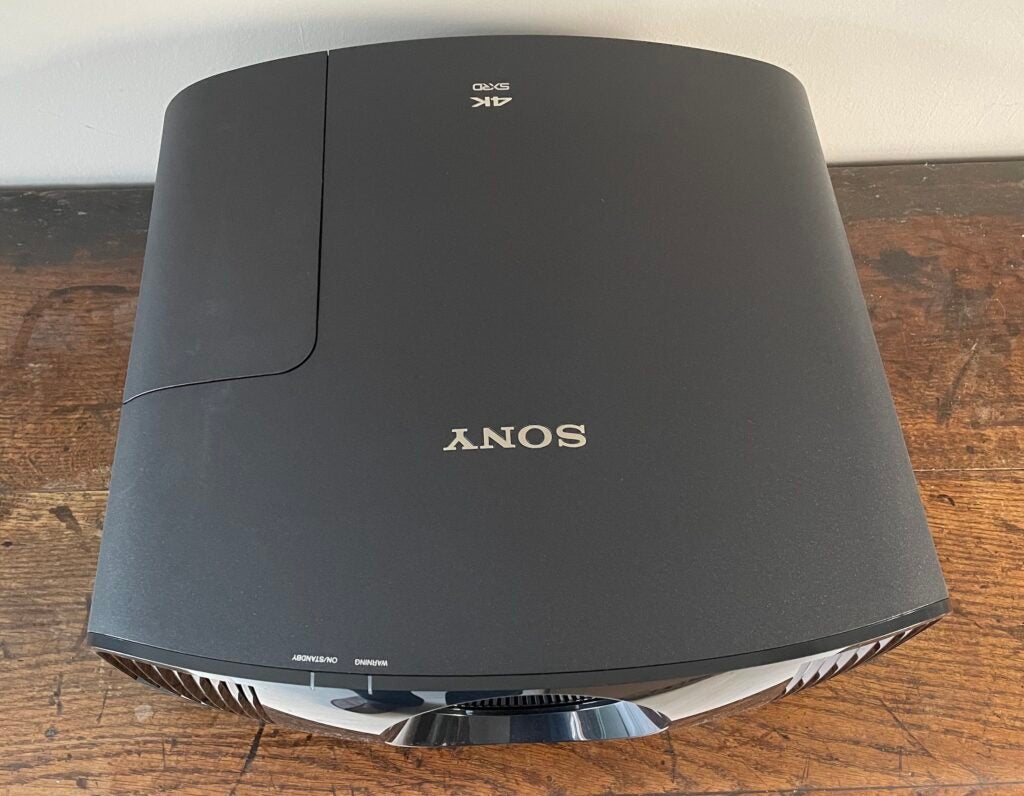
It helps, too, that the VW290ES wears its size well. Its rounded edges and vaguely elliptical shape feel suitably domesticated, and it’s available in both white and black options to suit your taste or specific installation environment.
The large, centrally mounted lens is recessed to help it avoid damage, and it’s accompanied down either side by a highly effective venting system that helps the VW290ES dissipate heat without running as noisily as you might expect. The VW290ES ships with an excellent remote control that’s large enough to carry well-labelled, easily found buttons, and features bright backlighting to ensure you can still use it in a dark cinema room.
Features
- Native 4K resolution
- HDR10 and HLG HDR support
- Two HDMI 2.0 connections
As ever with Sony’s 4K SXRD-type projectors, the headline feature of the VW290ES for many people will be the fact that its 4K resolution is native, rather than pseudo. In other words, the SXRD panels at the VW290ES’s heart actually carry 3840 x 2160 pixels, rather than having to conjure up sufficient pixels from a lower hardware resolution using clever processing in the way that every supposedly 4K rival at the VW290ES’s current price level does.
However, more exciting where I’m concerned is the VW290ES’s Dynamic HDR Enhancer. This clever system somehow manages to massively enhance the visual impact of HDR sources, by simultaneously improving black levels (by manipulating the lamp light output) and boosting the intensity of bright highlights via processing.
I’ve already seen it work wonders on Sony’s more expensive VW590ES and VW790ES projectors, so hopefully it can still deliver the goods on this much more affordable model.
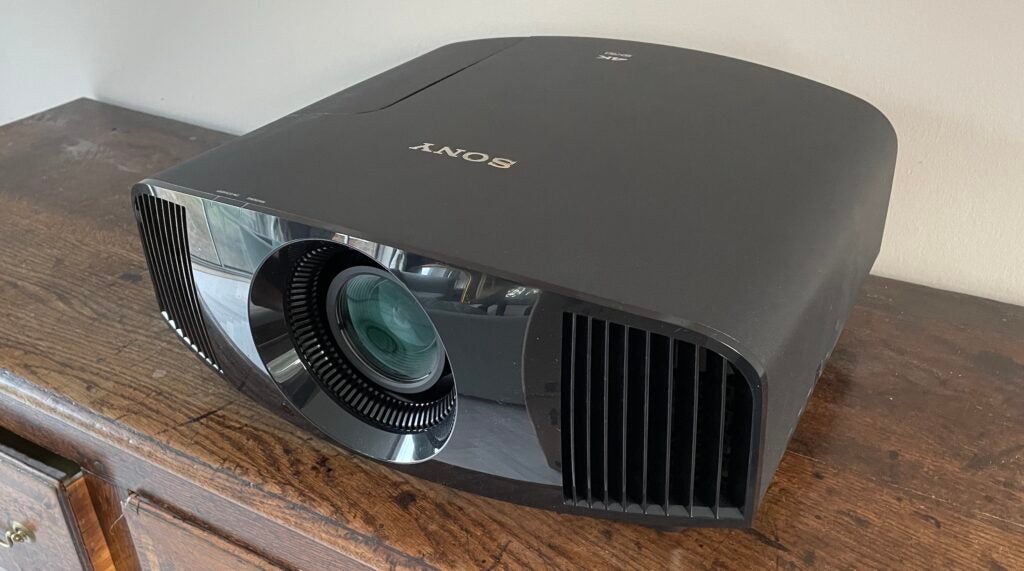
The VW290ES uses a lamp light source, like the VW590ES, rather than the laser system introduced by the VW790ES – and the upcoming XW5000ES models. This means you’ll need to replace the lamp every 5000-6000 hours or so, and brightness peaks at a claimed 1500 ANSI lumens rather than the more than 2000 lumens you get with the VW790ES’s laser-based system. Hopefully, this relatively limited brightness won’t cause the Dynamic HDR Enhancer system to come a cropper.
Impressively for its money, the VW290ES gets a motorised lens setup system, enabling you to adjust its focus and zoom, as well as shift the image optically horizontally or vertically, using the remote control. The adjustment controls are precise, too, offering plenty of image size and positioning flexibility. Note, though, that unlike Sony’s more premium projectors, the motorised lens adjustments aren’t accompanied by any lens memory functionality.
The VW290ES carries a dynamic iris for controlling the light output on the fly, to enhance contrast; it supports active shutter-type 3D playback, if you sort yourself out with compatible 3D glasses; and it powers its various image-processing tricks using Sony’s X1 For Projector chipset. This controls projector-optimised versions of Sony’s Motionflow motion processing, plus a sharpness/detail enhancement system called Reality Creation as well as the Dynamic HDR Enhancer.
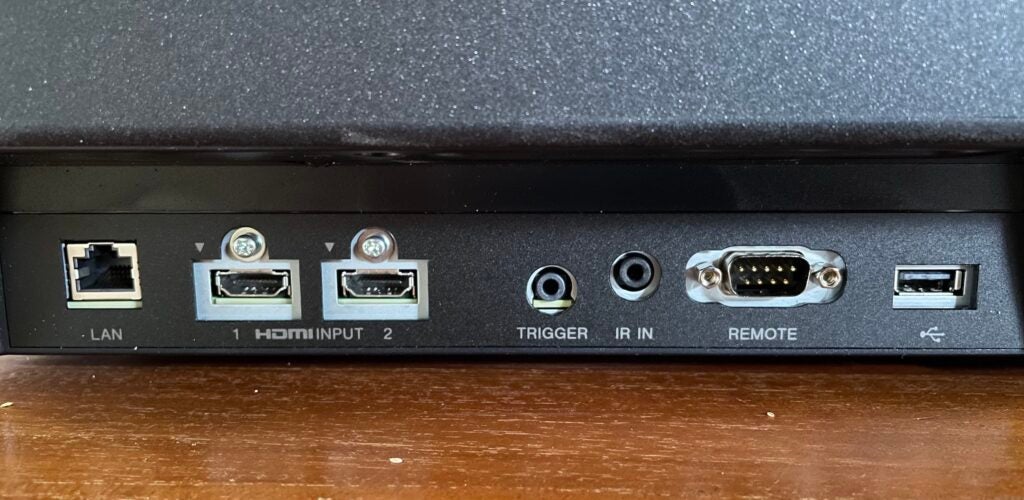
The VW290ES’s connections comprise two HDMI ports, a 12v trigger port you could use for, say, calling down a motorised roll-up screen, an Ethernet service port, an RS-232C control port for including the projector in a wider “macro” control system, an IR port, and a USB port. Again, the USB is only for service use; it doesn’t play multimedia files.
The HDMI ports are of the 2.0 variety, supporting 18Gbps data speeds. This means they don’t support aren’t compatible with the latest cutting-edge gaming features of 4K/120Hz feeds, or variable refresh rates.
Picture Quality
- Dynamic HDR Enhancer still delivers
- Excellent 4K sharpness
- Class-leading motion performance
The key question with the VW290ES is whether Sony’s Dynamic HDR Enhancer can still deliver the goods when it has only a 1500 lumens lamp light system to work with. And the simple answer is, yes, it can.
Feeding in tough-to-show HDR imagery, containing a high-contrast mix of very dark and very bright elements, instantly reveals what a difference the Dynamic HDR Enhancer makes. The feature’s Medium strength mode, in particular, joins the versions found on the VW590ES and VW790ES in making dark areas look darker, while also making the bright areas look lighter. It does this so convincingly that it’s hard to believe Sony hasn’t somehow introduced some sort of premium LCD TV-like local dimming system to the VW290ES’s optics.
It hasn’t, of course; such a thing isn’t possible using current projector technology. But the sense of enhanced contrast and extra localised punch for bright HDR highlights delivers an HDR experience unlike anything else in the VW290ES’s class.
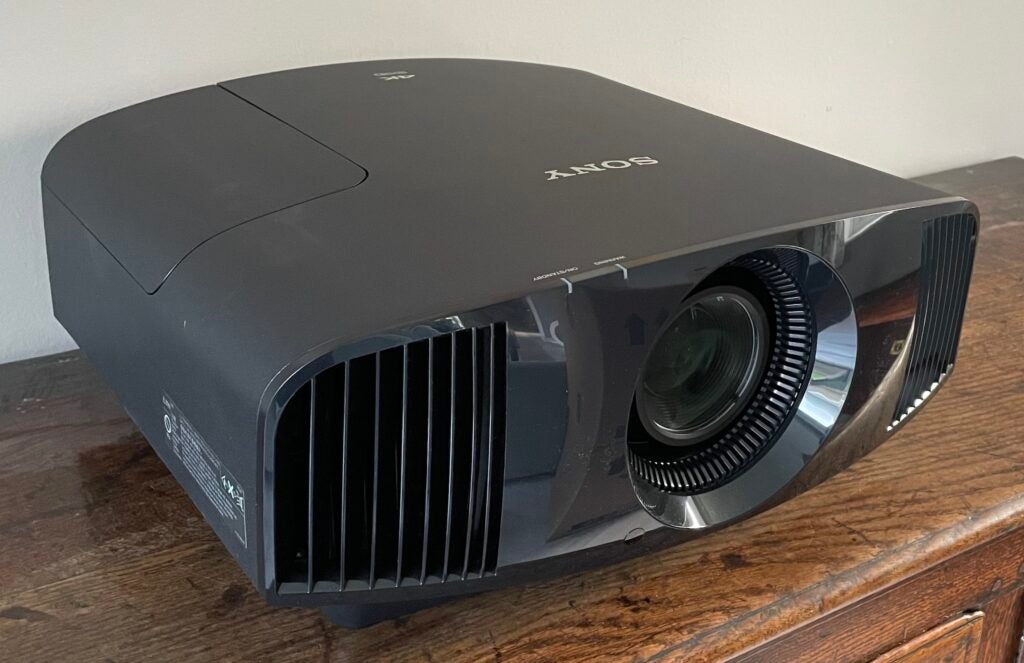
Especially since the VW290ES has enough colour range up its sleeve to keep colour saturations in line with the brightness. If it didn’t do this then colours might start to wash out slightly as the brightness feeding into them increases. But not even the strongest Dynamic HDR Enhancer setting causes so much as a hint of a faded colour tone.
That said, I wouldn’t suggest using the highest Dynamic HDR Enhancer setting, since it starts to push things too far, causing colours to look unnatural, with the gap between the brightest and darkest parts of the picture rather forced.
I should make it clear, too, that the Dynamic HDR Enhancer doesn’t yield such dramatically HDR-looking results on the VW290ES as it does on the VW590ES and VW790ES. This is hardly surprising, given that it has less brightness to work with. What matters is that it massively improves the VW290ES’s HDR performance, and improves it to a point where no other similarly affordable projector can get close to the contrast, colour vibrancy and brightness punch it can offer.
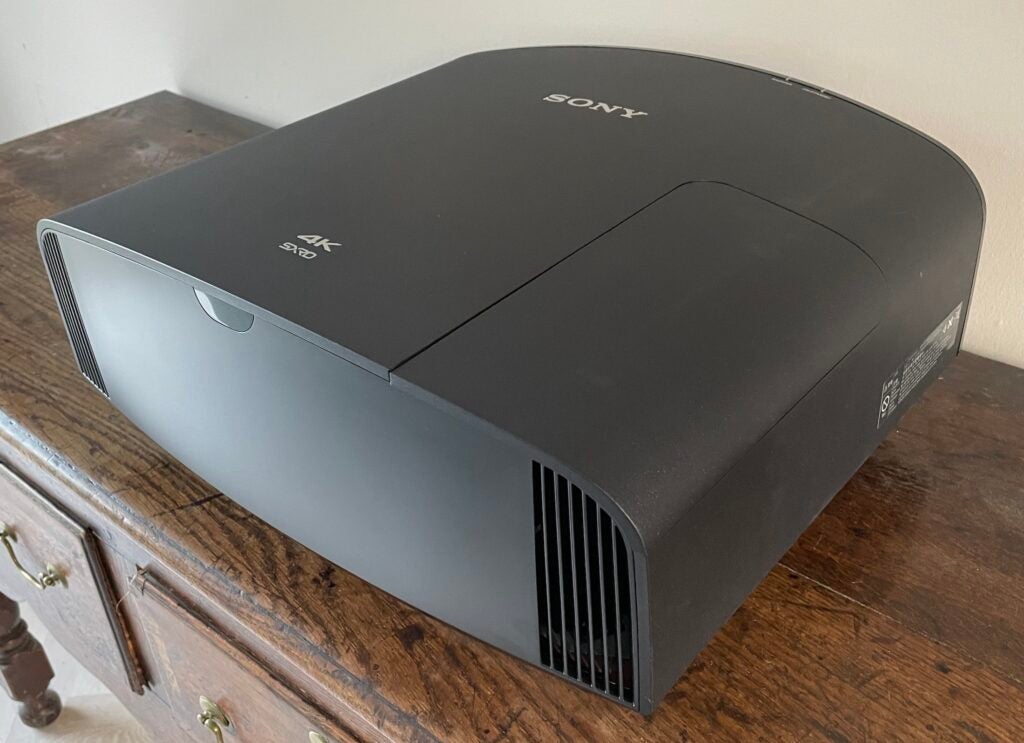
While the VW290ES’s HDR talents are its best attraction versus its competition, its headline-grabbing native 4K resolution also makes its mark. It delivers detailing and textures from high-quality 4K Blu-ray sources with more clarity and precision than any other sub-£5k projector I’ve seen. One or two DLP models come close; but in the end, there’s no replacement for being able to directly map a pixel in a 4K image to a pixel in a 4K display.
Neither does it do the VW290ES’s 4K clarity any harm that Sony’s Motionflow processing performs every bit as well on this projector as it does on Sony’s TVs. Especially the True Cinema setting, which takes the edge off potential hardware judder, without denying 24p movies the natural judder movie fans associate with a cinematic experience.
The True Cinema setting does its work, too, without regurgitating distracting processing side effects. It joins forces with the VW290ES’s detailing, startlingly rich and natural colours and excellent contrast performance, to deliver a fantastically consistent and immersive big-screen experience.
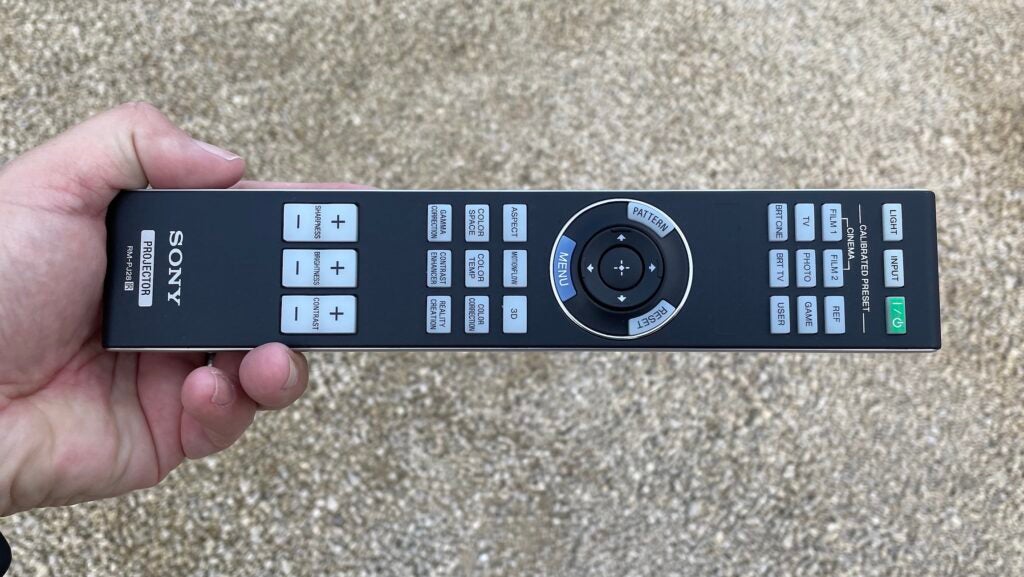
The X1 For Projector processor does a stand-up job of upconverting HD sources to the VW290ES’s native 4K resolution, too, adding plenty of detail without causing common upscaling issues such as ringing around high-contrast edges or exaggerated grain. The projector also runs quietly enough, even in its brightest HDR modes, not to break your viewing immersion – so long as you’ve partnered the projector with a half-decent home cinema sound system.
It’s difficult in the context of its £3999 price to find fault with the VW290ES. I guess purists might have preferred to find a more traditional dynamic tone mapping system in place of the Dynamic HDR Enhancer. But Sony has often argued – convincingly, in my opinion – that since HDR was created with bright TV screens in minds rather than projectors, you need to think out of the box if you want to create a convincing, exciting HDR experience out of the tools available to projectors.
It’s important to say, too, that JVC’s D-ILA projectors can deliver significantly deeper black levels than this Sony SXRD model. However, even the cheapest D-ILA model costs more than double the current price of the VW290ES, and they don’t come with the Dynamic HDR Enhancer to unlock the impression of HDR-friendly contrast that the VW290ES achieves.
Latest deals
Should you buy it?
Picture quality is outstanding for the money This is especially true when it comes to the always tricky (especially for projectors) job of handling high dynamic range sources.
You want a projector that supports the latest gaming features Unfortunately, the VW290ES doesn’t support 4K/120 playback or variable refresh rates. Although, to be fair, precious few rivals do either.
Final Thoughts
Sony’s VPL-VW290ES was a fantastic projector even at its previous £5500 price, particularly for the way it manages to do so much justice to high dynamic range images. The fact that you can now get all this quality for just £3999 simply makes a projector that was already excellent all but irresistible.
How we test
We test every projector we review thoroughly over an extended period of time. We use industry standard tests to compare features properly. We’ll always tell you what we find. We never, ever, accept money to review a product.
Find out more about how we test in our ethics policy.
FAQs
Yes, although only in the industry standard HDR10 and live-streaming/broadcast-friendly HLG formats. There’s no Dolby Vision or HDR10+ support.
This combines a system of adjusting the lamp output to boost black levels with clever algorithms to up the intensity of bright objects, resulting in more HDR-friendly contrast.
Sony quotes a likely lamp life of 6000 hours for the VW290ES lamps before they reach only half the brightness they started with. However, this could be reduced substantially if you run the lamp hard all the time with lots of HDR.
Verdict
Despite using a traditional lamp over the lasers found higher up in Sony’s projector range, the VW290ES has the light control and processing power required to deliver the most convincing high dynamic range pictures seen from such an affordable projector.
Pros
- Exceptionally effective HDR
- Excellent sharpness and detail
- Great value
Cons
- No 4K@120Hz/VRR gaming support
- Large footprint
- Not the brightest projector for its money
Introduction
Sony recently revealed that it’s going to introduce a new model, the XW5000ES, which will bring laser lighting to the entry-level end of its native 4K SXRD projector range for the first time.
However, far from making the brand’s current VW290ES lamp-based projector instantly out of date, Sony’s recent news has potentially made it more desirable. Why? Because it’s now widely available for just £3999 versus the £5499 it cost before. So are we looking at the home theatre world’s biggest bargain?
Availability
- UKRRP: £3999
- USARRP: $5400
- EuropeRRP: €3999
- AustraliaRRP: AU$8999
The VW290ES is now widely available for £3999 in the UK, and €3999 in Europe. That’s £1500 / €1500 less than it cost at launch. Cue distant “kerching” sounds and lots of home cinema fans with dangerously fast heartbeats.
Note that in the US the VW290ES is known as the VW325ES, and costs $5400.
Design
- Black and white options available
- Large footprint
- Impressively quite venting system
Despite its new, eye-catchingly affordable price, the Sony VW290ES is a serious bit of kit. So it’s no surprise to find it housed in an unusually large chassis by modern projector standards. You might just be able to fit it on a coffee table, but you probably won’t have room for popcorn and drinks as well.
Really, the VW290ES is designed to go into a dedicated home cinema room rather than a casual living space. And, ideally, it will be permanently installed in that dedicated room, potentially on the ceiling, so that its size isn’t really a problem.

It helps, too, that the VW290ES wears its size well. Its rounded edges and vaguely elliptical shape feel suitably domesticated, and it’s available in both white and black options to suit your taste or specific installation environment.
The large, centrally mounted lens is recessed to help it avoid damage, and it’s accompanied down either side by a highly effective venting system that helps the VW290ES dissipate heat without running as noisily as you might expect. The VW290ES ships with an excellent remote control that’s large enough to carry well-labelled, easily found buttons, and features bright backlighting to ensure you can still use it in a dark cinema room.
Features
- Native 4K resolution
- HDR10 and HLG HDR support
- Two HDMI 2.0 connections
As ever with Sony’s 4K SXRD-type projectors, the headline feature of the VW290ES for many people will be the fact that its 4K resolution is native, rather than pseudo. In other words, the SXRD panels at the VW290ES’s heart actually carry 3840 x 2160 pixels, rather than having to conjure up sufficient pixels from a lower hardware resolution using clever processing in the way that every supposedly 4K rival at the VW290ES’s current price level does.
However, more exciting where I’m concerned is the VW290ES’s Dynamic HDR Enhancer. This clever system somehow manages to massively enhance the visual impact of HDR sources, by simultaneously improving black levels (by manipulating the lamp light output) and boosting the intensity of bright highlights via processing.
I’ve already seen it work wonders on Sony’s more expensive VW590ES and VW790ES projectors, so hopefully it can still deliver the goods on this much more affordable model.

The VW290ES uses a lamp light source, like the VW590ES, rather than the laser system introduced by the VW790ES – and the upcoming XW5000ES models. This means you’ll need to replace the lamp every 5000-6000 hours or so, and brightness peaks at a claimed 1500 ANSI lumens rather than the more than 2000 lumens you get with the VW790ES’s laser-based system. Hopefully, this relatively limited brightness won’t cause the Dynamic HDR Enhancer system to come a cropper.
Impressively for its money, the VW290ES gets a motorised lens setup system, enabling you to adjust its focus and zoom, as well as shift the image optically horizontally or vertically, using the remote control. The adjustment controls are precise, too, offering plenty of image size and positioning flexibility. Note, though, that unlike Sony’s more premium projectors, the motorised lens adjustments aren’t accompanied by any lens memory functionality.
The VW290ES carries a dynamic iris for controlling the light output on the fly, to enhance contrast; it supports active shutter-type 3D playback, if you sort yourself out with compatible 3D glasses; and it powers its various image-processing tricks using Sony’s X1 For Projector chipset. This controls projector-optimised versions of Sony’s Motionflow motion processing, plus a sharpness/detail enhancement system called Reality Creation as well as the Dynamic HDR Enhancer.

The VW290ES’s connections comprise two HDMI ports, a 12v trigger port you could use for, say, calling down a motorised roll-up screen, an Ethernet service port, an RS-232C control port for including the projector in a wider “macro” control system, an IR port, and a USB port. Again, the USB is only for service use; it doesn’t play multimedia files.
The HDMI ports are of the 2.0 variety, supporting 18Gbps data speeds. This means they don’t support aren’t compatible with the latest cutting-edge gaming features of 4K/120Hz feeds, or variable refresh rates.
Picture Quality
- Dynamic HDR Enhancer still delivers
- Excellent 4K sharpness
- Class-leading motion performance
The key question with the VW290ES is whether Sony’s Dynamic HDR Enhancer can still deliver the goods when it has only a 1500 lumens lamp light system to work with. And the simple answer is, yes, it can.
Feeding in tough-to-show HDR imagery, containing a high-contrast mix of very dark and very bright elements, instantly reveals what a difference the Dynamic HDR Enhancer makes. The feature’s Medium strength mode, in particular, joins the versions found on the VW590ES and VW790ES in making dark areas look darker, while also making the bright areas look lighter. It does this so convincingly that it’s hard to believe Sony hasn’t somehow introduced some sort of premium LCD TV-like local dimming system to the VW290ES’s optics.
It hasn’t, of course; such a thing isn’t possible using current projector technology. But the sense of enhanced contrast and extra localised punch for bright HDR highlights delivers an HDR experience unlike anything else in the VW290ES’s class.

Especially since the VW290ES has enough colour range up its sleeve to keep colour saturations in line with the brightness. If it didn’t do this then colours might start to wash out slightly as the brightness feeding into them increases. But not even the strongest Dynamic HDR Enhancer setting causes so much as a hint of a faded colour tone.
That said, I wouldn’t suggest using the highest Dynamic HDR Enhancer setting, since it starts to push things too far, causing colours to look unnatural, with the gap between the brightest and darkest parts of the picture rather forced.
I should make it clear, too, that the Dynamic HDR Enhancer doesn’t yield such dramatically HDR-looking results on the VW290ES as it does on the VW590ES and VW790ES. This is hardly surprising, given that it has less brightness to work with. What matters is that it massively improves the VW290ES’s HDR performance, and improves it to a point where no other similarly affordable projector can get close to the contrast, colour vibrancy and brightness punch it can offer.

While the VW290ES’s HDR talents are its best attraction versus its competition, its headline-grabbing native 4K resolution also makes its mark. It delivers detailing and textures from high-quality 4K Blu-ray sources with more clarity and precision than any other sub-£5k projector I’ve seen. One or two DLP models come close; but in the end, there’s no replacement for being able to directly map a pixel in a 4K image to a pixel in a 4K display.
Neither does it do the VW290ES’s 4K clarity any harm that Sony’s Motionflow processing performs every bit as well on this projector as it does on Sony’s TVs. Especially the True Cinema setting, which takes the edge off potential hardware judder, without denying 24p movies the natural judder movie fans associate with a cinematic experience.
The True Cinema setting does its work, too, without regurgitating distracting processing side effects. It joins forces with the VW290ES’s detailing, startlingly rich and natural colours and excellent contrast performance, to deliver a fantastically consistent and immersive big-screen experience.

The X1 For Projector processor does a stand-up job of upconverting HD sources to the VW290ES’s native 4K resolution, too, adding plenty of detail without causing common upscaling issues such as ringing around high-contrast edges or exaggerated grain. The projector also runs quietly enough, even in its brightest HDR modes, not to break your viewing immersion – so long as you’ve partnered the projector with a half-decent home cinema sound system.
It’s difficult in the context of its £3999 price to find fault with the VW290ES. I guess purists might have preferred to find a more traditional dynamic tone mapping system in place of the Dynamic HDR Enhancer. But Sony has often argued – convincingly, in my opinion – that since HDR was created with bright TV screens in minds rather than projectors, you need to think out of the box if you want to create a convincing, exciting HDR experience out of the tools available to projectors.
It’s important to say, too, that JVC’s D-ILA projectors can deliver significantly deeper black levels than this Sony SXRD model. However, even the cheapest D-ILA model costs more than double the current price of the VW290ES, and they don’t come with the Dynamic HDR Enhancer to unlock the impression of HDR-friendly contrast that the VW290ES achieves.
Latest deals
Should you buy it?
Picture quality is outstanding for the money This is especially true when it comes to the always tricky (especially for projectors) job of handling high dynamic range sources.
You want a projector that supports the latest gaming features Unfortunately, the VW290ES doesn’t support 4K/120 playback or variable refresh rates. Although, to be fair, precious few rivals do either.
Final Thoughts
Sony’s VPL-VW290ES was a fantastic projector even at its previous £5500 price, particularly for the way it manages to do so much justice to high dynamic range images. The fact that you can now get all this quality for just £3999 simply makes a projector that was already excellent all but irresistible.
How we test
We test every projector we review thoroughly over an extended period of time. We use industry standard tests to compare features properly. We’ll always tell you what we find. We never, ever, accept money to review a product.
Find out more about how we test in our ethics policy.
FAQs
Yes, although only in the industry standard HDR10 and live-streaming/broadcast-friendly HLG formats. There’s no Dolby Vision or HDR10+ support.
This combines a system of adjusting the lamp output to boost black levels with clever algorithms to up the intensity of bright objects, resulting in more HDR-friendly contrast.
Sony quotes a likely lamp life of 6000 hours for the VW290ES lamps before they reach only half the brightness they started with. However, this could be reduced substantially if you run the lamp hard all the time with lots of HDR.








